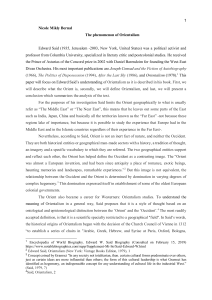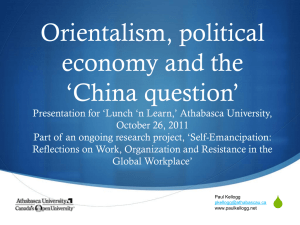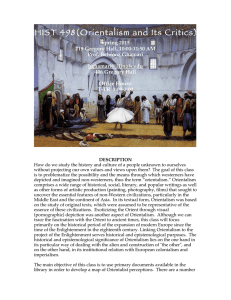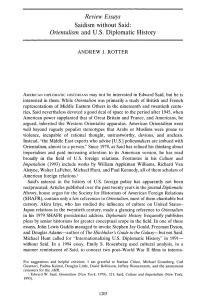Orientalism - Indus Valley School of Art & Architecture
advertisement
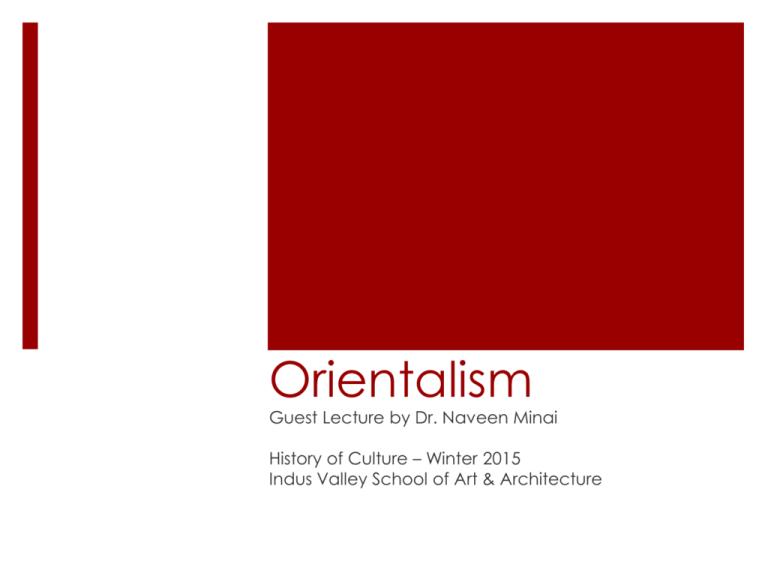
Orientalism Guest Lecture by Dr. Naveen Minai History of Culture – Winter 2015 Indus Valley School of Art & Architecture Context During the 18th and 19th centuries, an Orientalist was the name for an academic expert who spoke the languages of the East (The Orient), who specialized in art and architecture and literature and music from the East, who translated legal and diplomatic documents for Western European governments, collecting antiquities for museums, and so on and so forth. Orientalist was a legitimate category of expertise and knowledge Orientalism (1978) In 1978, Edward Said redefined “Orientalism” to mean precisely the politics and power in Western Europe and then later, in the United States, that produced something called ‘the Orient’ or ‘the East,’ and what effects these politics have had. Significance of Orientalism Edward Said’s key text “Orientalism”(1978) has provided a way of identifying, and analyzing cultural, academic, and political representations that are racist and sexist towards non-European communities and histories. It helped to identify how such people were: marked as inferior, for example, barbaric or uncivilized collapsed into one another, thereby erasing differences of identity and history excluded from the legitimate production of knowledge about their cultures and histories Understanding the “Other” Other = the definition of someone who is not you. The opposite of yourself. Self and Other are politically and socially constructed categories. Other such constructions are: - race - ethnicity - language - gender - sexuality - class - religion - nationality What is “Discourse”? Discourse means the way a topic is talked about and written about It is the set of meanings that is applied, through the kind of language that is used and the connotations or words Discourse is how a story is told, what language and ideas you use to tell a story Example: Terrorist vs Freedom Fighter Understanding “Orientalism” Orientalism = the construction of a binary, of the East and the West, as polar opposites of each other, culturally, historically, politically, socially, and intellectually. According to Said (1978), the Orient or the East has been narratively invented by the Occident or the West as “its deepest and most recurring image of the Other,” that is, all that the West is not. This means that the West becomes centered, becomes the reference point — which involves judgment and value Where can we find orientalist representations? TV shows, Films, Literature Public Opinion Government Policies Foreign Policy Academia What is Philic Orientalism? Philic Orientalism = the use of Orientalism in cultural, political, and academic representations by people who have historically been identified as part of, or from, the Orient Philic Orientalism = people who have been identified as part of the East reproduce the binary between the East and the West, and create a sense of superiority for the East
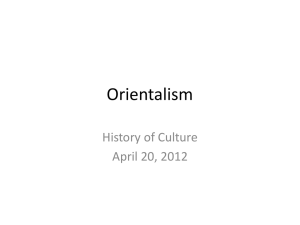
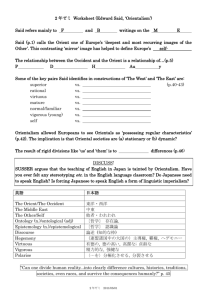
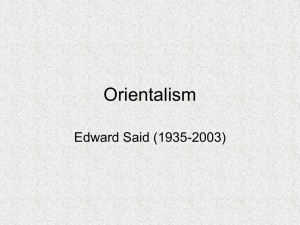
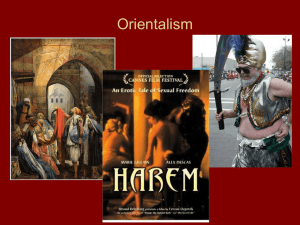
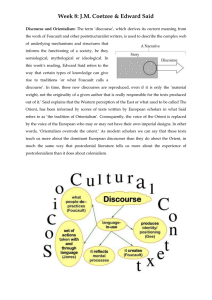
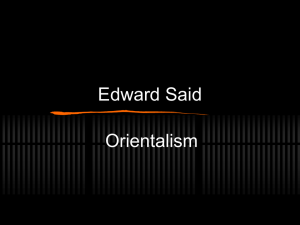
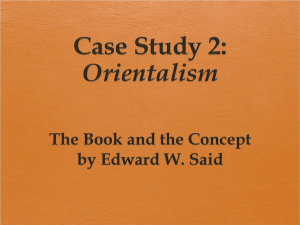
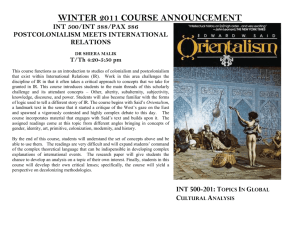
![Orientalism PPT[1].](http://s3.studylib.net/store/data/009508903_1-bf40dd03912d19b9c9baea1f12c90f25-300x300.png)
